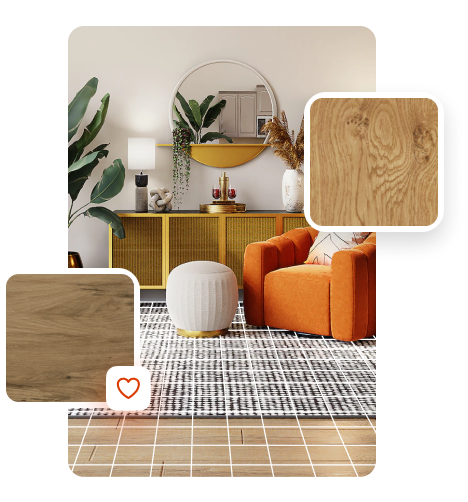Dust Free Bedroom
Creating Comfortable Space
Home
Dustless Hardwood Floor Refinishing
Dust Free Bedroom
Information from: National Institutes of Health
If you are dust-sensitive, especially if you have allergies and/or asthma, you can reduce some of your misery by creating a dust free bedroom. Dust may contain molds, fibers, and dander from dogs, cats, and other animals, as well as tiny dust mites.
If you are dust-sensitive, especially if you have allergies and/or asthma, you can reduce some of your misery by creating a dust free bedroom. Dust may contain molds, fibers, and dander from dogs, cats, and other animals, as well as tiny dust mites. These mites, which live in bedding, upholstered furniture, and carpets, thrive in the summer and die in the winter. They will, however, continue to thrive in the winter if the house is warm and humid. The particles seen floating in a shaft of sunlight include dead mites and their waste products. The waste products actually provoke the allergic reaction. Routine cleaning necessary to maintain a dust free space also can help reduce exposure to cockroaches, another important cause of asthma in some allergic people. You probably cannot control dust conditions under which you work or spend your daylight hours. To a large extent, however, you can eliminate dust from your bedroom. To create a dust-free bedroom, you must reduce the number of surfaces on which dust can collect. In addition to getting medical care for your dust allergy and/or asthma, the National Institute of Allergy and Infectious Diseases suggests the following guidelines. To create your own dust free bedroom, completely empty the room, just as if you were moving. Empty and clean all closets and, if possible, store contents elsewhere and seal closets. Keep clothing in zippered plastic bags and shoes in boxes off the floor, if you cannot store them elsewhere. Remove carpeting, if possible. Clean and scrub the woodwork and floors thoroughly to remove all traces of dust. Wipe wood, tile, or linoleum floors with water, wax, or oil. Cement any linoleum to the floor. Close the doors and windows until the dust-sensitive person is ready to use the room. Wear a filter mask when cleaning. Carpeting makes dust control impossible. Although shag carpets are the worst type to have if you are dust sensitive, all carpets trap dust. Therefore, health care experts recommend hardwood, tile, or linoleum floors for your dust free bedroom. Treating carpets with tannic acid eliminates some dust mite allergen. Tannic acid, however, is not as effective as removing the carpet, is irritating to some people and must be applied repeatedly. Keep only one bed in the dust free bedroom. Most importantly, encase box springs and mattress in a zippered dust-proof or allergen-proof cover. Scrub bed springs outside the room. If you must have a second bed in the room, prepare it in the same manner. Use only washable materials on the bed. Sheets, blankets, and other bedclothes should be washed frequently in water that is at least 130 degrees Fahrenheit. Lower temperatures will not kill dust mites. Keep furniture and furnishings to a minimum in the dust free bedroom. Air filters-either added to a furnace or a room unit-can reduce the levels of allergens. Electrostatic and HEPA (high-efficiency particulate absorption) filters can effectively remove many allergens from the air. If they don't function right, however, electrostatic filters may give off ozone, which can be harmful to your lungs if you have asthma. A dehumidifier may help because house mites need high humidity to live and grow. You should take special care to clean the unit frequently with a weak bleach solution (1 cup bleach in 1 gallon water) or a commercial product to prevent mold growth. Although low humidity may reduce dust mite levels, it might irritate your nose and lungs. In addition to the above guidelines, if you are caring for a child who is dust-sensitive, keep toys that will accumulate dust out of the child's bedroom. Keep all animals with fur or feathers out of your bedroom. If you are allergic to dust mites, you could also be allergic or develop an allergy to cats, dogs, or other animals. Although these steps may seem difficult at first, experience plus habit will make them easier. The results-better breathing, fewer medicines, and greater freedom from allergy and asthma attacks-will be well worth your effort. Return to top of Dust Free Bedroom Page. Visit our Instagram Return to Home Page
 Dust Free Bedroom?
Dust Free Bedroom?

PREPARATION
MAINTENANCE
Clean the bedroom thoroughly and completely once a week.
Clean floors, furniture, tops of doors, window frames and sills, etc., with a damp cloth or oil mop.
Carefully vacuum carpet and upholstery regularly.
Use a special filter in the vacuum.
Wash curtains often at 130 degrees Fahrenheit.
Air the room thoroughly.CARPETING AND FLOORING
BEDS AND BEDDING
If you set your hot water temperature lower (commonly done to prevent children from scalding themselves), wash items at a laundromat which uses high wash temperatures.
Use a synthetic, such as Dacron, mattress pad and pillow. Avoid fuzzy wool blankets or feather- or wool-stuffed comforters and mattress pads. FURNITURE AND FURNISHINGS
Avoid upholstered furniture and blinds.
Use only a wooden or metal chair that you can scrub.
Use only plain, lightweight curtains on the windows.AIR CONTROL IN THE DUST FREE BEDROOM
CHILDREN
Avoid stuffed toys
Use only washable toys of wood, rubber, metal, or plastic.
Store toys in a closed toy box or chest.PETS






























New! Comments
Have your say about what you just read! Leave me a comment in the box below.